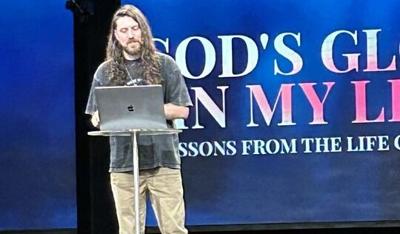Evangelism can feel intimidating, but for most of us, it�����Ƶ�s not a lack of willingness�����Ƶ�it�����Ƶ�s a lack of understanding. Simply put, evangelism is sharing the Gospel.
That�����Ƶ�s it! And according to Jesus, it�����Ƶ�s not a suggestion�����Ƶ�it�����Ƶ�s an expectation: �����Ƶ�Go into all the world and preach the gospel to all creation�����Ƶ� (Mark 16:15).
But how do we actually do this in our everyday lives? Jesus gives us a powerful model in His interaction with the Samaritan woman in John 4:1�����Ƶ�26.
It starts with something simple: slowing down. Jesus was on a journey, yet He
paused at a well in Samaria. He was tired, yet unhurried�����Ƶ�not distracted or in a rush. In fact, throughout the Gospels, we see Jesus continually living with intention and margin�����Ƶ�stopping for a leper (Mark 1:40�����Ƶ�42) and pausing for a bleeding woman (Mark 5:25�����Ƶ�34). He created space for divine encounters.
As Adrian Rogers said, �����Ƶ�If Satan can�����Ƶ�t make you bad, he�����Ƶ�ll make you busy.�����Ƶ�
Sometimes our greatest opportunities to share the Gospel will come in what feel like interruptions.
At the well, Jesus also broke through barriers. Speaking to this woman was socially, culturally, and even morally unexpected. Jews rarely associated with Samaritans, men didn�����Ƶ�t casually speak with women in public, and holy teachers certainly didn�����Ƶ�t engage with women of questionable reputation. Yet Jesus wasn�����Ƶ�t concerned about societal norms�����Ƶ�He was concerned about the woman�����Ƶ�s soul.
So, He built a bridge instead of a wall. He showed us that connection should come before correction. Evangelism isn�����Ƶ�t about drawing lines between �����Ƶ�us�����Ƶ� and �����Ƶ�them.�����Ƶ�
It�����Ƶ�s about drawing near to others�����Ƶ�just as Jesus did.
Then, not only did Jesus build a bridge, but He also led the conversation with listening. Jesus didn�����Ƶ�t launch into a sermon immediately�����Ƶ�He began with a question:
�����Ƶ�Will you give Me a drink?�����Ƶ� (John 4:7). His longest recorded conversation in Scripture began with simple human interaction.
In a world full of opinions, listening is one of the most powerful ways we can show love. We don�����Ƶ�t need perfect words; we just need a present, listening heart.
John 4:13-14 contains one more lesson on evangelism. When He finally responded to her needs, Jesus offered life, not a lecture. He acknowledged her
brokenness without shaming her. He spoke truth, but He did it in love, offering her living water�����Ƶ�Himself�����Ƶ�something her soul had been thirsting for all along.
I love that Jesus�����Ƶ� message to this woman wasn�����Ƶ�t, �����Ƶ�Clean up first,�����Ƶ� but �����Ƶ�Come to Me and live.�����Ƶ� He didn�����Ƶ�t crush her with her past; He invited her into a beautiful future.
This is the Gospel in motion: grace, truth, and the opportunity for change wrapped in kindness.
When we follow Jesus�����Ƶ� lead�����Ƶ�by slowing down, breaking barriers, listening well, and offering hope instead of shame�����Ƶ�we won�����Ƶ�t just share information. We�����Ƶ�ll share the hope of transformation! And as a result, many lives will change�����Ƶ� including ours.



Commented